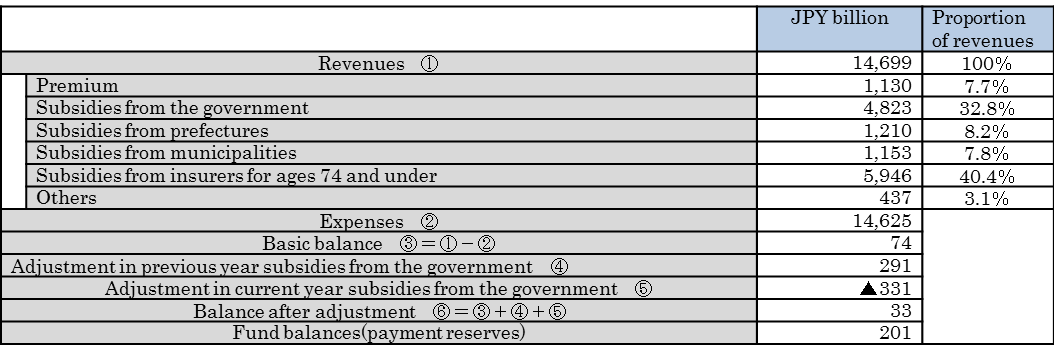Column Finance and the Social Security System 2018.04.03
【Aging, safety net and fiscal crisis in Japan】No.85: Fiscal Balance of the Latter-Stage Elderly Medical Care System in 2016
The latter-stage elderly medical care system is a form of public insurance in which elderly people aged 75 and above are obliged to join. The system comprises 47 prefectures as insurers. As shown in Table 1, the number of insured persons increases at a rate of about 3% annually. Per capita benefit in FY 2016 is 862,070 yen, which does not include the patient's out-of-pocket burden accounting for 7.8% (in 2015) of medical expenses. The medical expenses per capita of the elderly including out-of-pocket burden (in 2015) are 499,700 yen for the age group of 65 to 69; 653,400 yen for ages 70 to 74; 801,500 yen for ages 75 to 79; 943,500 yen for ages 80 to 84, and 1,077,900 yen for ages 85 and above.
In March 2018, the Ministry of Health, Labor and Welfare announced the fiscal balance of the latter-stage elderly medical care system in 2016. As Table 2 shows, 40.4% of the revenues are subsidized by the insurer for 74 years and under. In other words, working generations support this system.

Source: Ministry of Health, Labor and Welfare

